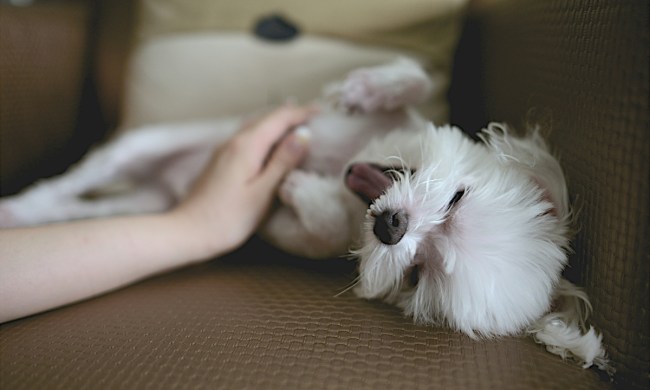If you can make it to January 1st without hearing about someone’s New Year’s resolution, you are in the vast, vast minority. Even though most resolutions fade by the time February rolls around, they’re still a fun, easy way to set goals for the upcoming year. Even New Year’s resolutions for dogs can have an awesome impact on your furry friend’s health and happiness. When done right, a New Year’s resolution can become a habit (or a met goal) before you know it.
Here’s what to think about if you’re considering setting a New Year’s resolution for your dog.
A resolution helps you stay on top of your pet’s health
When deciding whether to set resolutions for your pet this New Year, take a moment to stop and think about why you may want to set a goal in the first place. Perhaps you’d like to help yourself keep up with your pup’s exercise routines, or maybe you’re looking for new ways to bond with your furry friend. Whatever the reason may be, setting a resolution or goal can help you take the first step toward recognizing what you want to accomplish.
Not only does it feel great to see your resolutions through, but doing so can actually benefit your health and your dog’s. For example, simply making the effort to walk together for 30 minutes every day can strengthen the cardiovascular system and boost weight loss and mental health for both of you. Not only that, but it keeps you accountable too—especially if you tell all your dog’s Instagram followers what your goal is for the New Year.
Keeping up with your goals is a great way to ensure that your dog’s needs are all met, too, even if you only set one resolution for your pooch this year. This can be a helpful strategy to get used to all kinds of lifestyle changes, especially if they’re necessary to improve the health of your four-legged friend. Besides—it never hurts to have a little fun while you’re at it!

Set goals with a tangible time frame
As important as it is to enjoy the process of working toward your dog’s resolutions, it’s also vital to set yourself up for success. Scientifically, there’s a reason why setting goals works—you just need to know how to do it the right way. It can be time-consuming at first, but it can also help you stick with your resolutions in the long run.
Though it’s more often seen in schools and offices, the concept of S.M.A.R.T. goals can be extremely helpful when setting a successful New Year’s resolution for your pup.
Smart goals are:
- Specific. What do you want to accomplish? Don’t be afraid to get detailed!
- Measurable. Ask yourself, “what does success look like?” How will you know when you and your pup have reached your goal? Don’t just think about what you want to achieve, but solidify how you and your dog will get there.
- Attainable. Make sure you’re not asking too much of your pup, or of yourself.
- Relevant. The more important your goal is to you, the more motivated you might be to keep taking action!
- Time-oriented. When do you want to reach certain milestones? Are you giving yourself until the end of the calendar year to accomplish your New Year’s resolution? Six months? One month?
Sound like a lot? Don’t worry—we’re here to walk you through it. Even better, the University of California San Diego has an online, printable worksheet for you to jot down all your ideas and brainstorms on. Like many others, this S.M.A.R.T. goals worksheet was designed for those experiencing job anxiety, so don’t worry if it doesn’t all seem relevant to you.

It’s a fun way to work on healthy habits
Setting goals may sound like work, but New Year’s resolutions are fun and festive. Not only do you get to start the next calendar year with ambition and positive intentions, but you can make your resolution whatever you want it to be.
Want to spend more time outside? Maybe you need a weekly hike with your four-legged friend. Looking to help your dog’s separation anxiety? Practice desensitization a little bit every day. You really can help your dog’s resolution work for you!
When setting resolutions, try to think of ways to make it fun for both you and your pup. If you need to set a goal that, well… isn’t so fun (like giving your buddy medication or a daily eye de-boogering), don’t be afraid to enlist the help of your dog’s favorite treats and toys.
Have fun with it
Remember to make it enjoyable for you, too! Whether you document your pup’s progress on TikTok or bring your goals to life on a fancy poster, enjoying the process will make it much more likely that you’ll keep up with your resolution and eventually reach your goal. Now that you know what it takes to create a fun, attainable New Year’s resolution for your dog, it’s time to decide: will you do it? If you’re still feeling unsure, remember, you can make your goal as big or as small as you want to. It’s time to make next year your time to shine!



